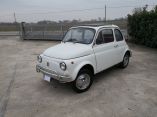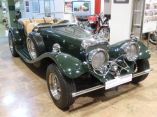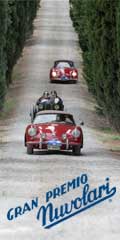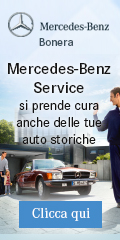


Fiva: Historic vehicles are not simply old vehicles
25 Febbraio 2016
Fiva: Historic vehicles are not simply old vehicles
Protecting, Preserving and Promoting World Motoring Heritage
“Historic vehicles are not simply ‘old’ vehicles,” says FIVA
– as it lobbies for consistency in low-emission-zone restrictions
As the number of ‘low-emission zones’ (LEZs) across Europe continues to increase, FIVA – the international federation of historic vehicles – is lobbying for a clear distinction between ‘old’ and ‘historic’ vehicles, and for a consistent, Europe-wide policy on historic vehicle exemptions.
The Fédération Internationale des Véhicules Anciens (FIVA) understands the need for lowemission zones or LEZs, as towns have to comply with targets set in EU air-quality Directives and to meet health concerns expressed by the World Health Organisation. Clearly, as older vehicles tend to be more polluting than newer vehicles, LEZ measures often target older vehicles – but FIVA firmly believes that the fundamental differences between ‘old’ vehicles and ‘historic’ vehicles should be recognised.
FIVA president Patrick Rollet explains: “By ‘historic vehicle’, we mean a mechanically propelled road vehicle at least 30 years old, preserved and maintained in a historically correct condition and not used as a means of daily transport. These vehicles are part of our technical and cultural heritage and, in our opinion, should not be lumped together with old, badly maintained cars that are used as cheap, everyday transport, when considering the problem of urban air pollution.”
FIVA argues that there are many good reasons why the contribution of historic vehicles to urban air pollution is negligible*:
1. Historic vehicles – whether cars, motorcycles or utilitarian – make up only an insignificantly small fraction of road vehicles and an even smaller fraction of road traffic, hence their contribution to air pollution is proportionately tiny. Since they are generally used purely for pleasure, they are rarely used in urban areas at peak times – and for all these reasons, emissions from these culturally important vehicles are statistically irrelevant.
2. Historic vehicles are well maintained, again reducing their impact on the environment. Owners typically spend several thousand euros per year on restoration, purchase of parts and accessories, maintenance and repairs.
3. Historic vehicles are driven carefully – as reflected in their very low insurance premiums.
4. Very few historic vehicles have diesel engines (the primary target of many LEZs). “Historic vehicle owners preserve motoring heritage and provide the public with a free museum of our motoring history and culture by using their vehicles on public roads,” adds Patrick Rollet. “It would be a great shame to see the disintegration of this important aspect of our cultural heritage. Meanwhile, any bans or restrictions on the use of historic vehicles will not only be grossly unfair on owners, but will also impact the thousands of small businesses that depend on the historic vehicle movement.
Protecting, Preserving and Promoting World Motoring Heritage
“Many countries across the EU have already positively decided that historic vehicles should be exempt from their low-emission-zone restrictions – including Germany, Italy, Hungary, the Czech Republic, Denmark, Sweden and the UK. However, not only do the rules vary between one EU nation and another, but in some instances the rules can be different even when travelling from town to town within the same country. This is extremely confusing for historic vehicle owners.
“In summary, we are lobbying the EU politicians for three things. First, that there is a clear definition of ‘historic vehicles’ as opposed to simply ‘old’ vehicles. Secondly, that historic vehicles should be exempt from LEZ restrictions. And thirdly that the exemption is applied consistently – not only within each country, but across the EU as a whole. We warmly encourage historic vehicle clubs and owners to likewise lobby their own national authorities where LEZs exist or are proposed.”

88 (SERIE 3) LAND ROVER (GB)
€ 16800

500 LUSSO FIAT (I)
€ 6000

2000 BMW (D)
€ 12000

SS100 ROADSTER JAGUAR (GB)
€ 27000

220 MERCEDES (D)
€ 14000
Gare d�Epoca.com - Corse auto d'epoca, mostre auto d'epoca, eventi auto d'epoca, raduni auto d'epoca
E’ proibita la riproduzione, anche parziale, senza un link a questo sito
Gare d�Epoca asd. - P. Iva 03147750982 -









 Commenta la news
Commenta la news